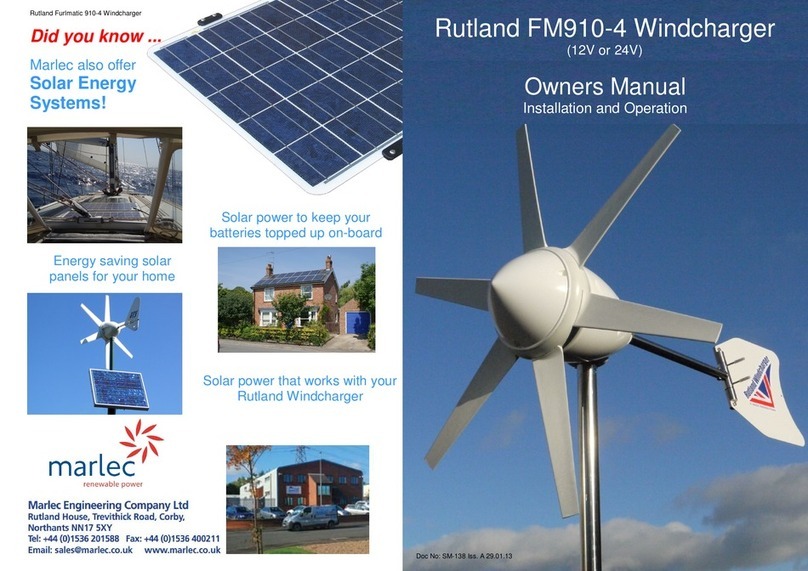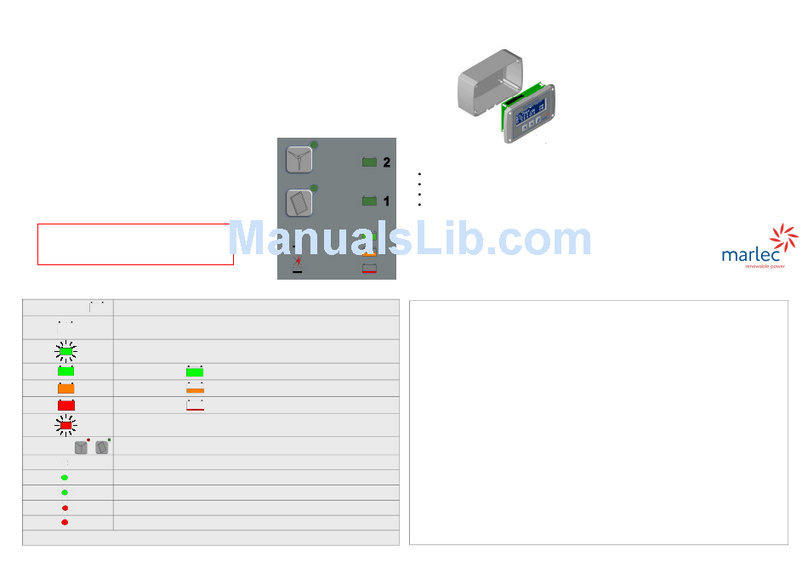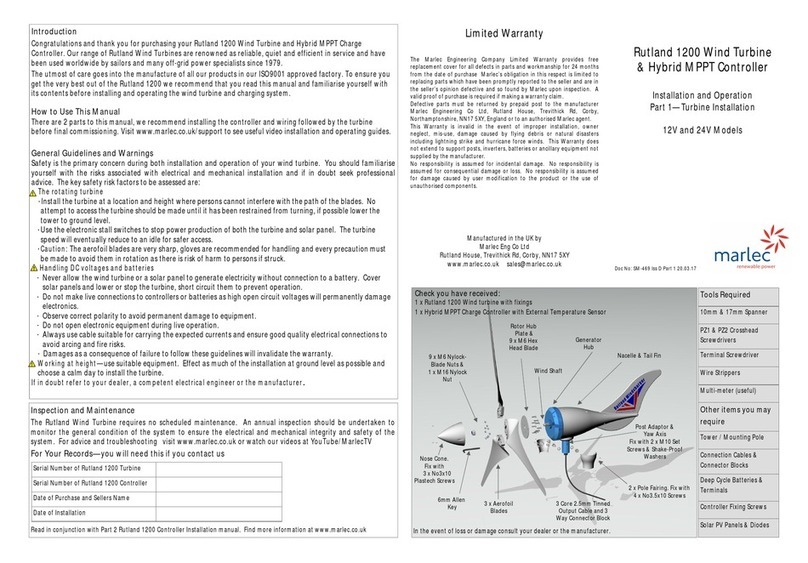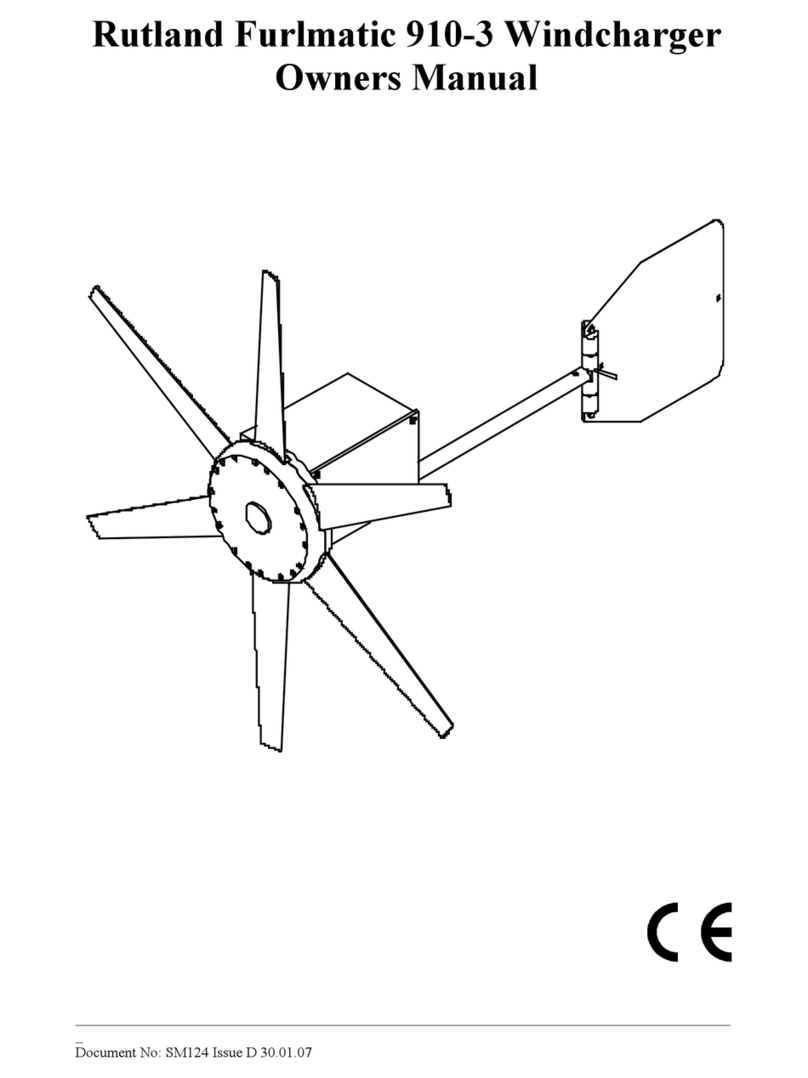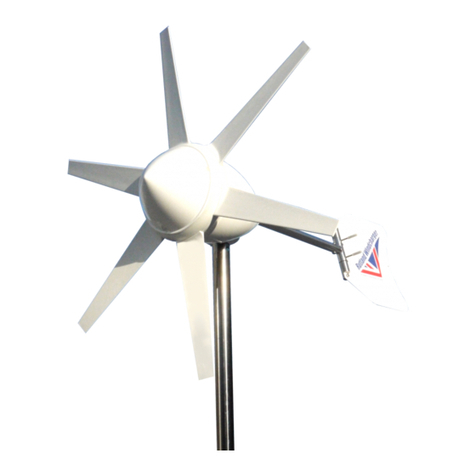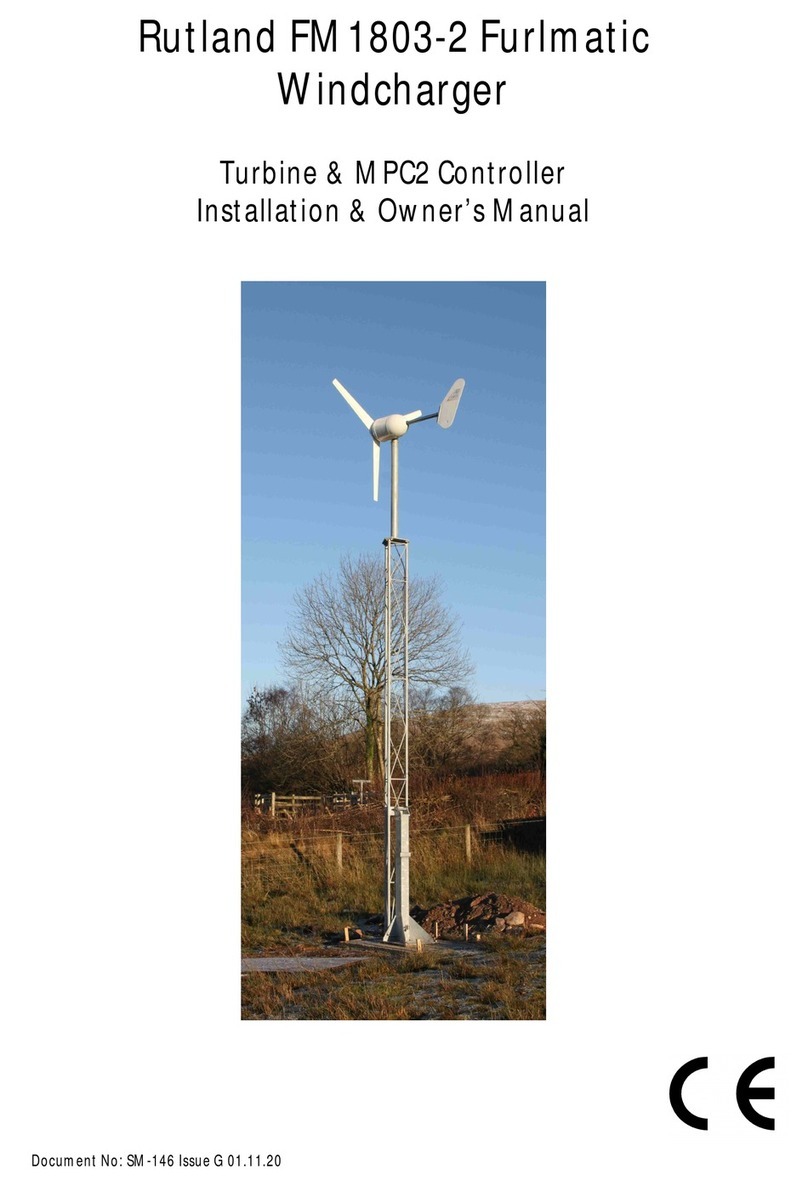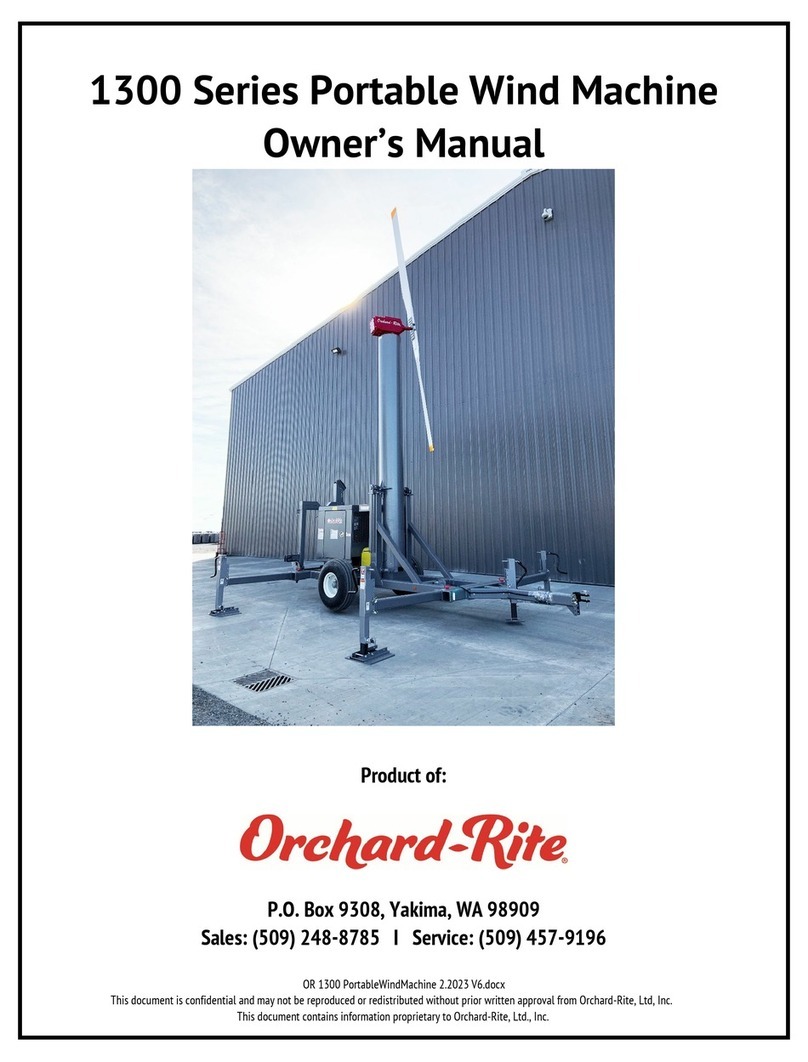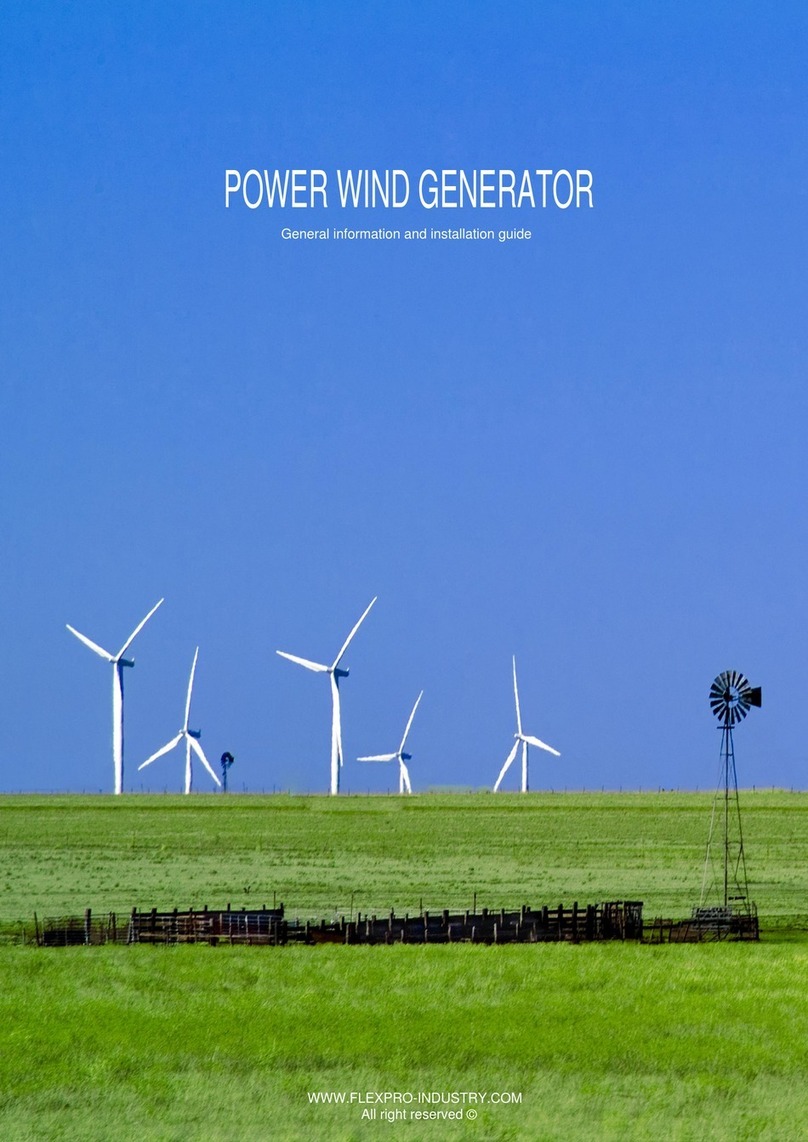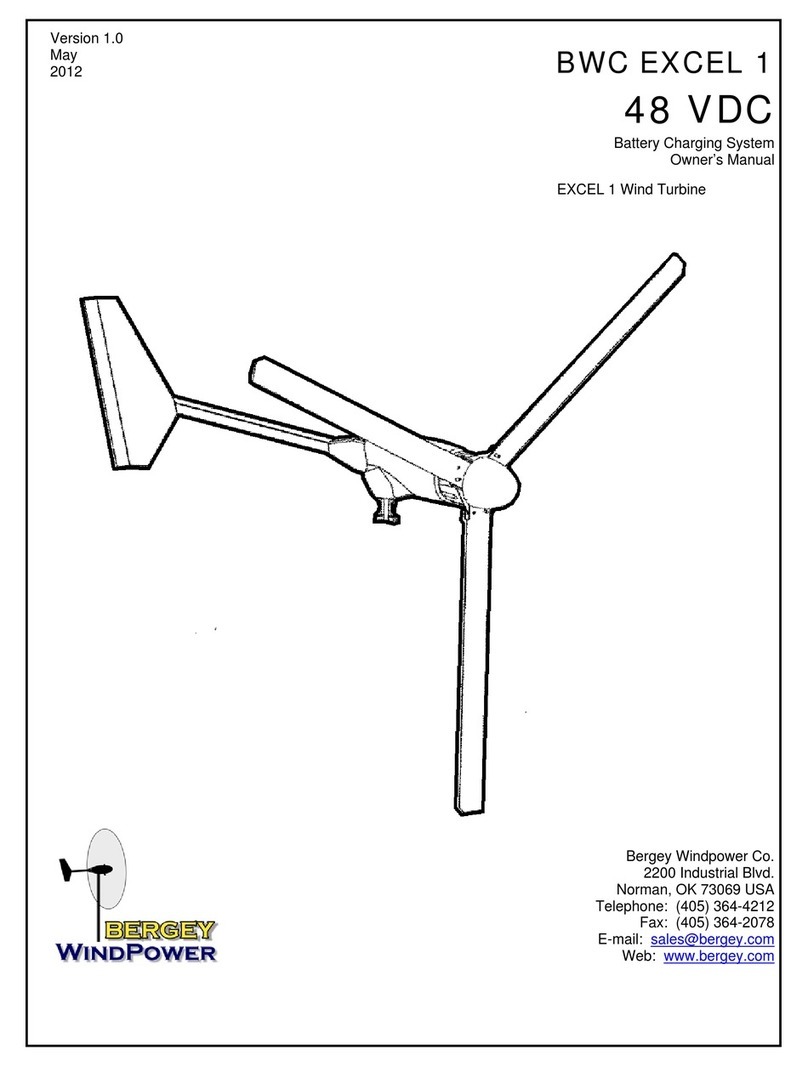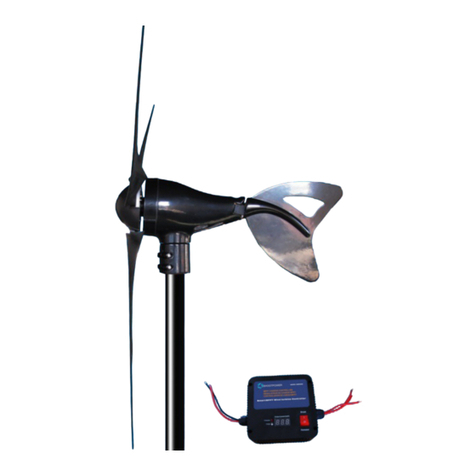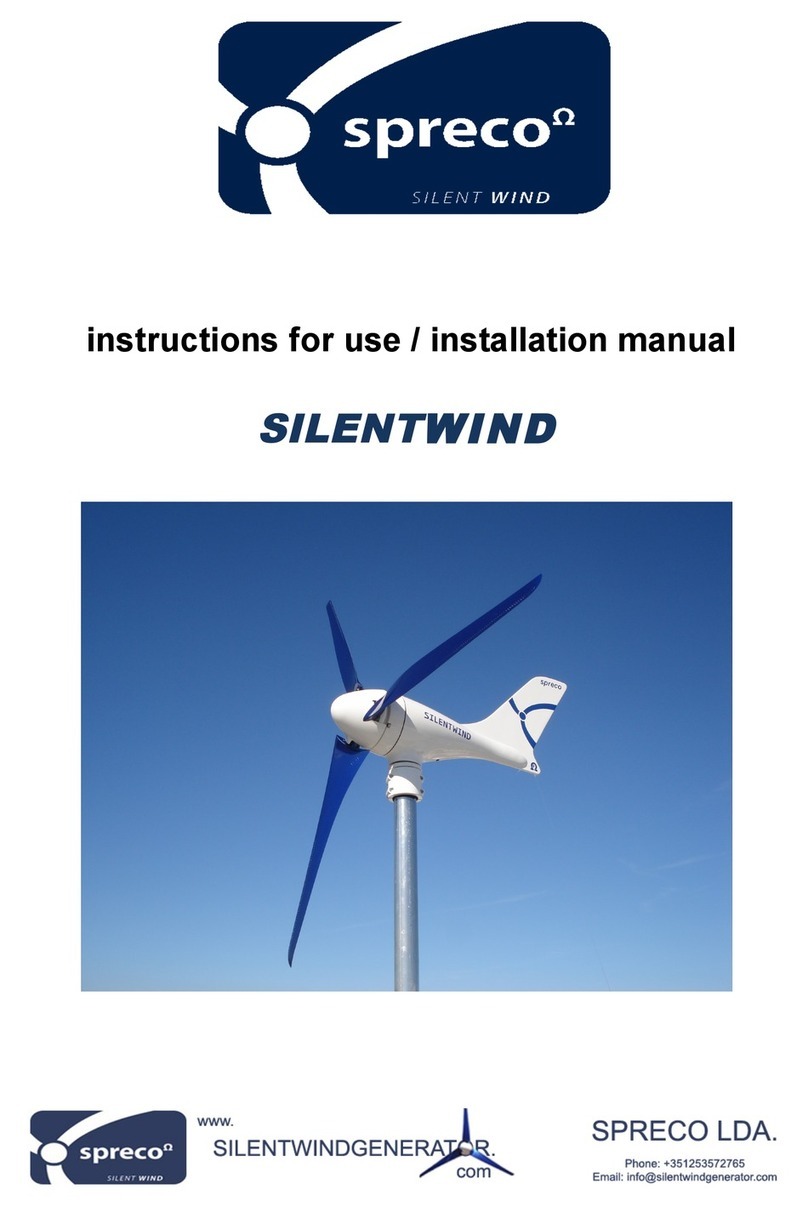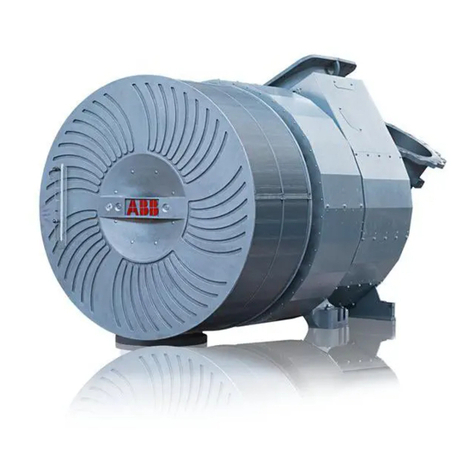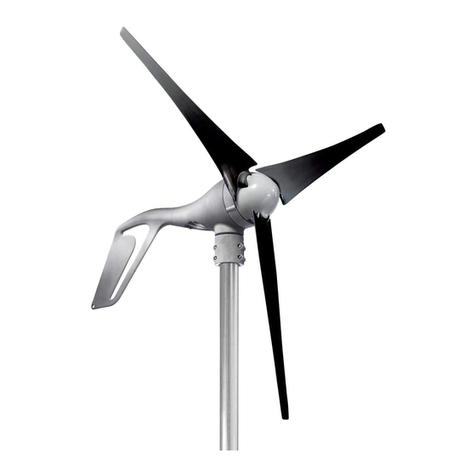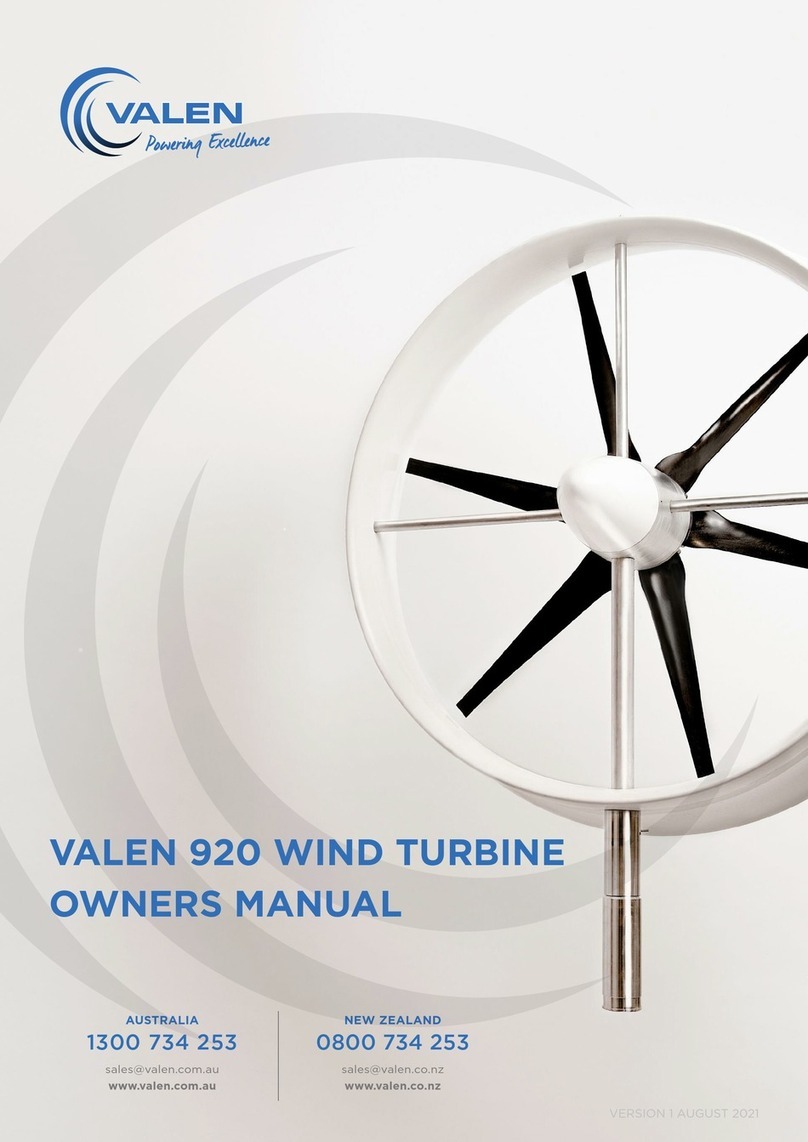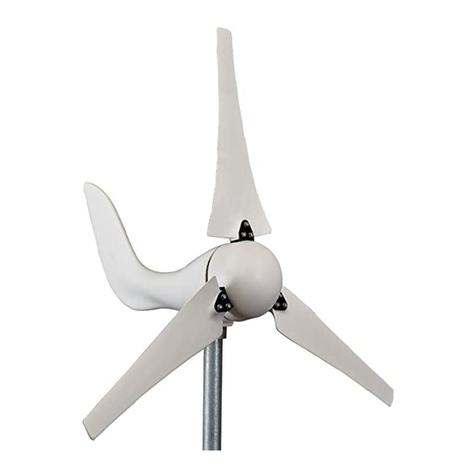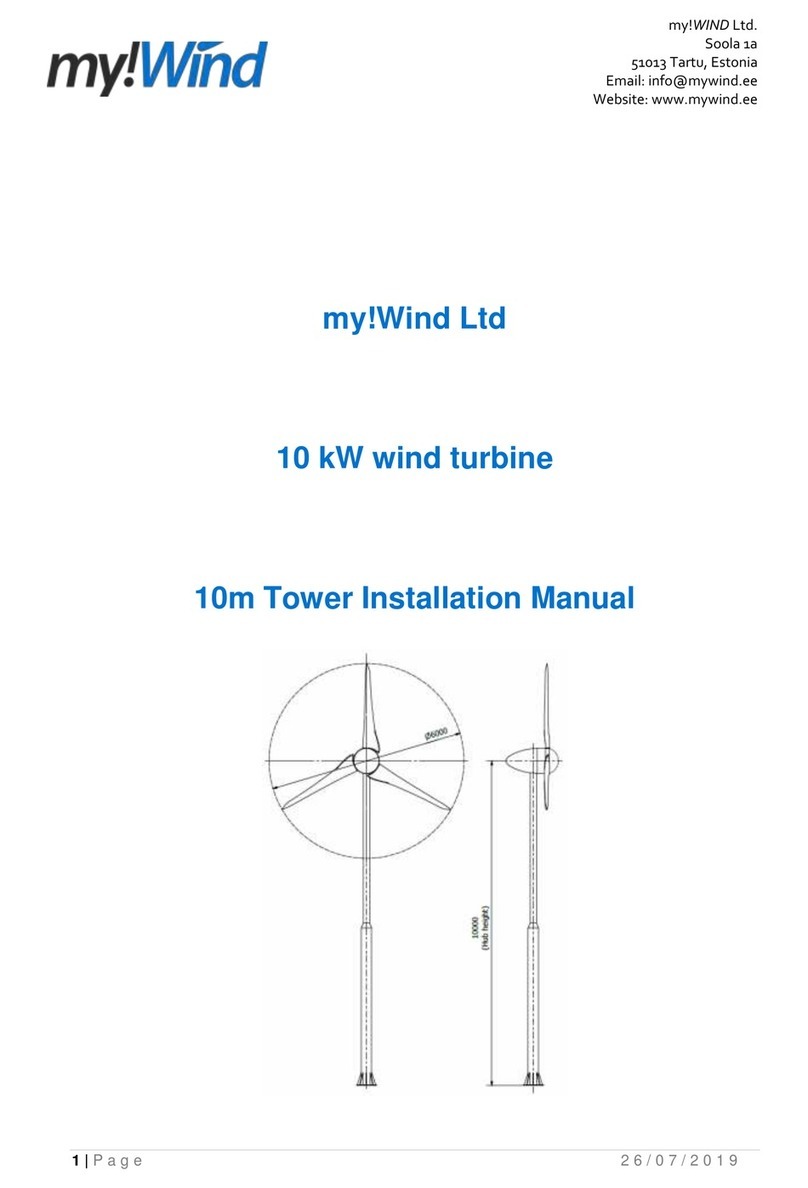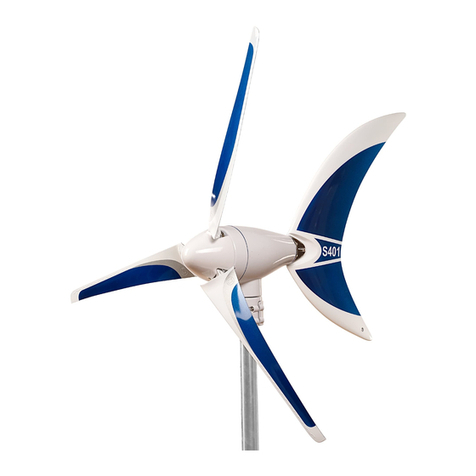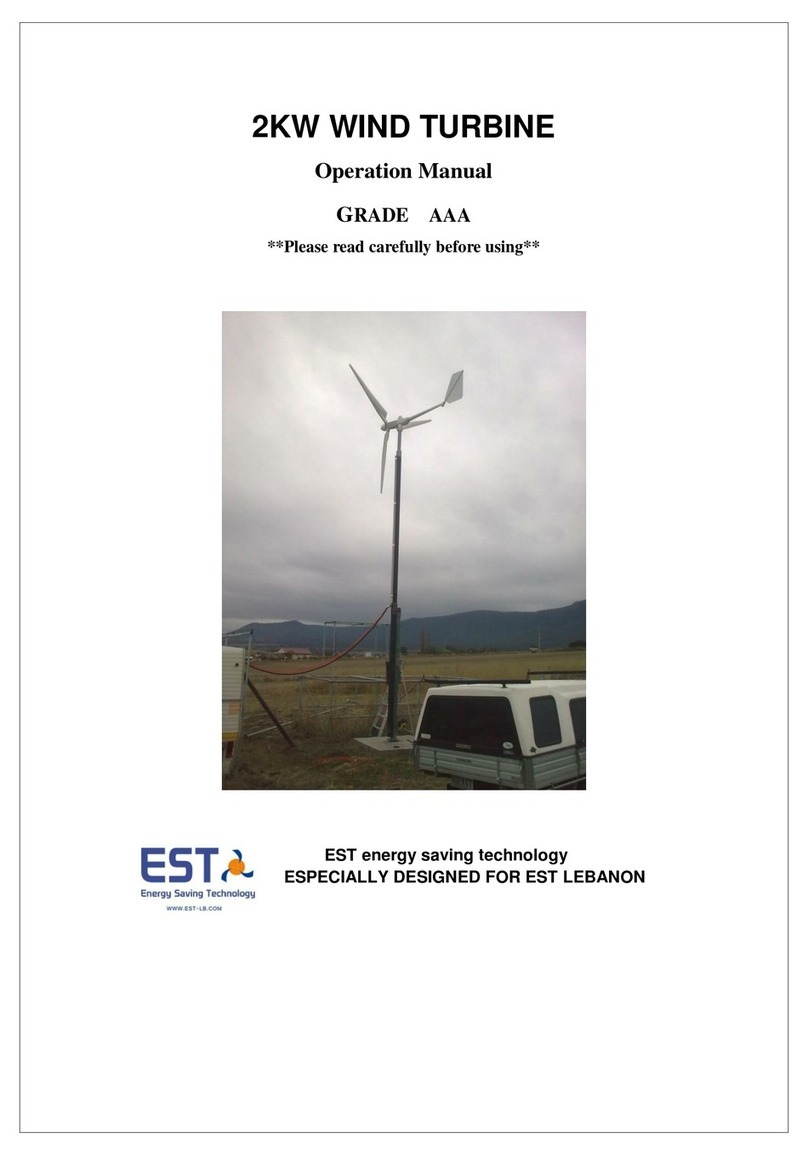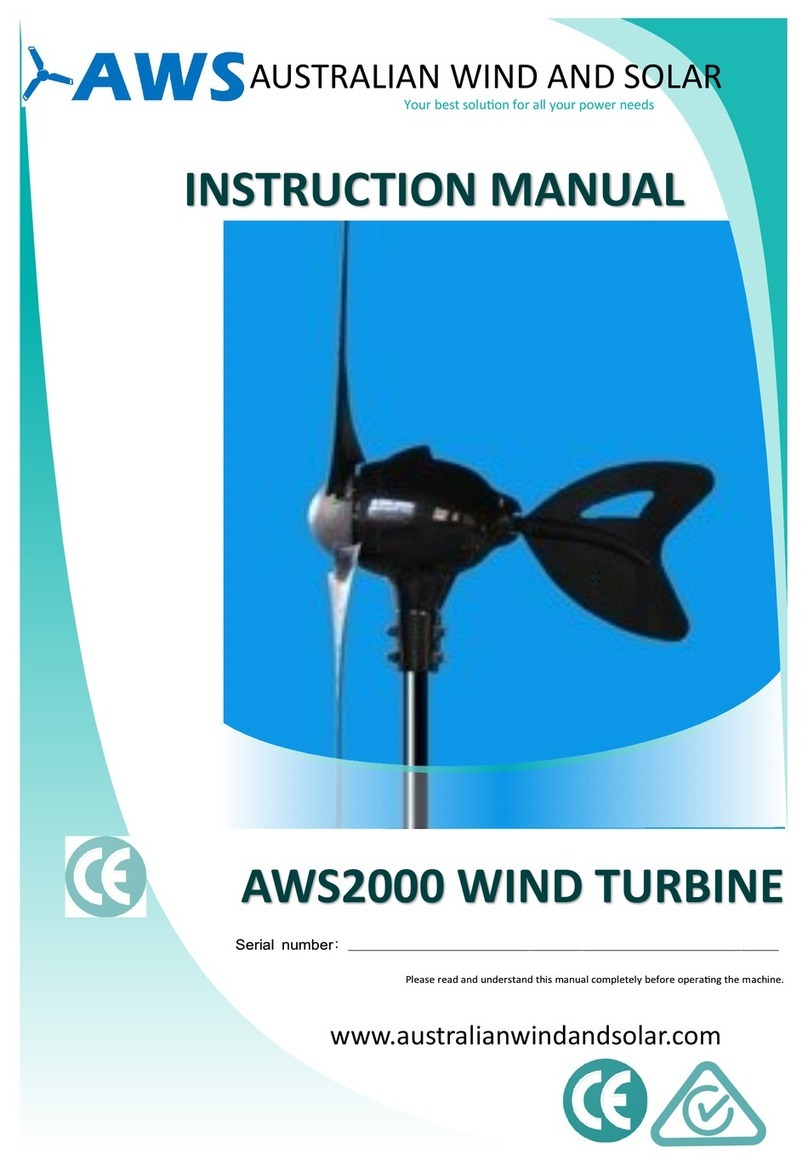
Rutland FM1803-2 Installation & Operation
Document No: SM-146 Issue D 14.03.08 Marlec Engineering Co Ltd
8
Transitional modes indicated by LEDs:
Charge/Stall LED Flashing Green/Amber – Currently in charge mode, the
battery voltage has reached the fully charged level & a time delay period has
started prior to entering stall mode, the voltage must remain at this level for the
whole of the time period before a mode change will take place. If the voltage falls
again while in this phase, the LED will stop flashing & the controller will stay in
charge mode. This is to prevent unnecessary change of mode during transient
voltage changes.
Charge/Stall LED Red/ pulsing off once per second – The Controller has
switched to stall mode & a time delay period has started to allow the turbine to
stabilize in the new operating mode before re-checking the battery voltage.
Charge/Stall LED Flashing Red/Amber – Currently in stalled mode, the battery
voltage has reached the lower voltage limit & a time delay period has started prior
to entering charge mode, the voltage must remain at this level for the whole of the
time period before a mode change will take place. If the voltage rises again while
in this phase, the LED will stop flashing & the controller will stay in stall mode.
This is to prevent unnecessary change of mode during transient voltage changes.
Charge/Stall LED Green/ pulsing off once per second – The Controller has
switched to charge mode & a time delay period has started to allow the turbine to
stabilize in the new operating mode before re-checking the battery voltage.
Low/High Wind LED Flashing Green/Amber – Currently in Low wind mode,
the charge current has reached the upper limit for low wind mode & a time delay
period has started prior to entering High wind mode, the current must remain at
this level for the whole of the time period before a mode change will take place. If
the current falls again while in this phase, the LED will stop flashing & the
controller will stay in Low wind mode. This is to prevent unnecessary change of
mode during transient current changes.
Low/High Wind LED Red/ pulsing off once per second – The Controller has
switched to High wind mode & has started a time delay period to allow the turbine
to stabilize in the new operating mode before re-checking the charge current.
Low/High Wind LED Flashing Red/Amber – Currently in High wind mode, the
charge current has reached the lower limit for high wind mode & a time delay
period has started prior to entering Low wind mode, the current must remain at this
level for the whole of the time period before a mode change will take place. If the
current increases again while in this phase, the LED will stop flashing & the
controller will stay in High wind mode. This is to prevent unnecessary change of
mode during transient current changes.
